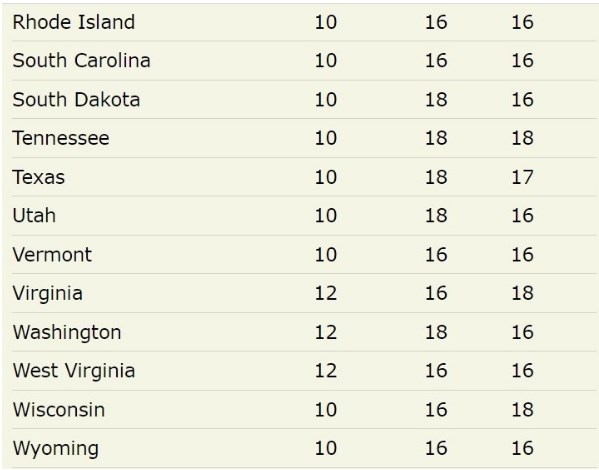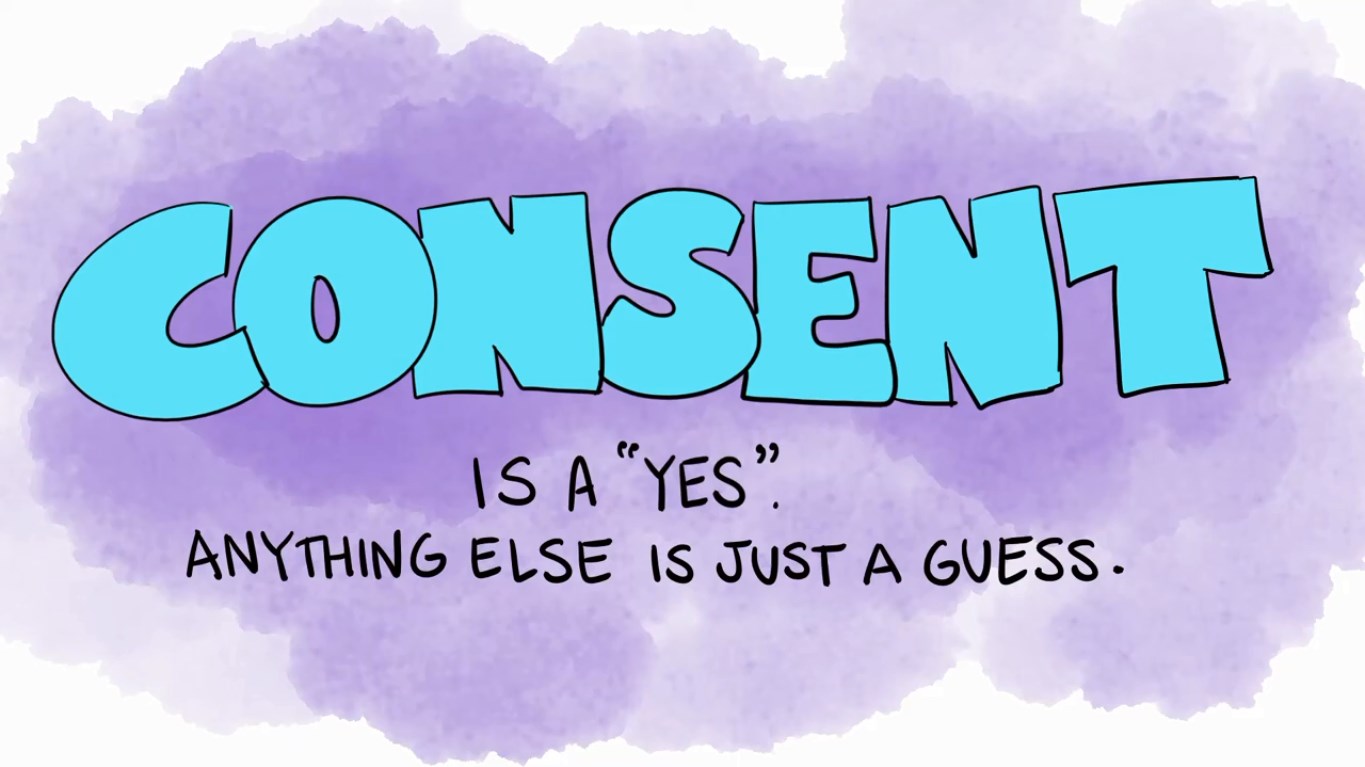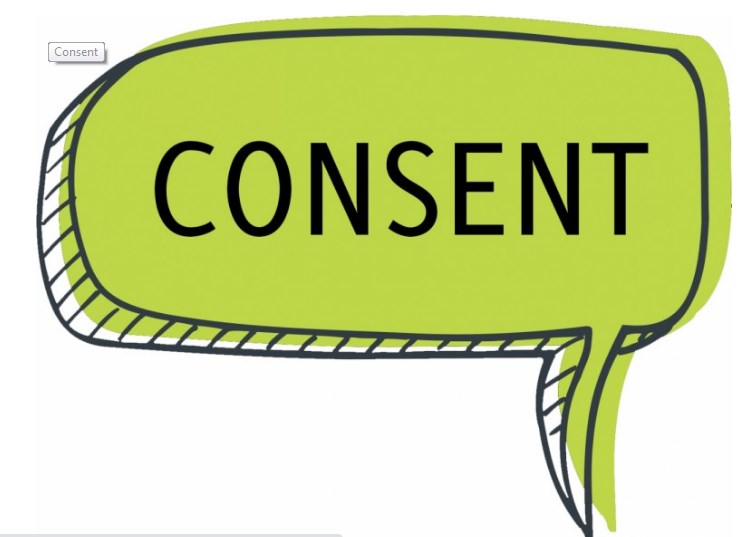Navigating the Complexities of Consent Washington Age of Consent, Sexting, and Legal Implications
Washington Age of Consent is a critical aspect of understanding consent, particularly in sexual contexts. Consent emphasizes the need for voluntary, informed, and explicit agreement between parties involved in any sexual activity. In modern society, where sexual norms and legal boundaries are continuously evolving, understanding and defining consent is crucial. Consent must be given freely, without coercion, and must be clear and unequivocal. The concept also entails the capacity to understand and agree to the sexual activity in question, which becomes particularly complex when considering adolescents and young adults. Awareness of the Washington Age of Consent helps clarify these complexities and ensures that individuals are aware of the legal standards governing sexual activity in their jurisdiction.
This essay aims to delve into the legal definitions and implications surrounding the age of consent. It will analyze how consent is legally defined and enforced, especially in relation to the practice of sexting—a phenomenon that has become prevalent with the advent of digital technology. By examining the intersection between consent, sexting, and legal challenges, the essay seeks to highlight the complexities and legal ambiguities that arise in this context.
The significance of this topic is underscored by the profound impact that internet technology has had on the notion of consent and related legal issues. The rise of smartphones and social media platforms has facilitated the creation and sharing of sexual images, complicating legal interpretations of consent and age. Additionally, there has been a notable increase in sex crimes, correlating with greater internet access and the ease of disseminating sexual content. Understanding these dynamics is crucial for developing effective legal frameworks and educational strategies to protect individuals while addressing modern technological challenges.
I. Understanding Consent and Age of Consent
Definition of Consent
Consent in sexual contexts refers to a mutual agreement between individuals to engage in sexual activity. It must be explicit, meaning that all parties involved must clearly communicate their willingness to participate. Consent should be informed, ensuring that each person understands the nature of the activity and its potential consequences. This means that consent cannot be obtained through coercion, manipulation, or deceit. Each participant must have the capacity to consent, which includes being of legal age and mentally capable of understanding what they are agreeing to.
The concept of consent is pivotal in establishing sexual rights and protecting individuals from exploitation and abuse. Explicit consent involves verbal agreement or clear, affirmative actions that indicate willingness, while informed consent requires that individuals are fully aware of what they are consenting to, including the risks and implications of the activity.
Legal Age of Consent
The legal age of consent varies significantly across different jurisdictions, reflecting cultural, societal, and legal attitudes towards adolescent sexuality. This age determines the minimum age at which an individual is legally permitted to engage in sexual activities. For example, in many countries, the age of consent is set at 16, meaning that individuals under this age are considered legally incapable of consenting to sexual activities.
In England and Wales, the age of consent is 16, aligning with many other countries in Europe. This legal standard is intended to protect minors from exploitation and ensure that they are sufficiently mature to make informed decisions about their sexual activities. In Scotland, the age of consent is also set at 16. However, Scotland has additional legal provisions that address the protection of young people in specific contexts, such as when there is a significant age difference or when the younger individual is in a position of vulnerability.
The legal frameworks in these jurisdictions aim to balance the protection of young individuals from exploitation with the recognition of their emerging autonomy. Despite the uniform age of consent, the application of these laws can vary based on individual circumstances and the nature of the relationships involved.
Sexual Consent and Adolescent Development
Adolescent development plays a critical role in understanding sexual consent. Psychological and emotional maturity can significantly influence a young person’s ability to give informed consent. Adolescents are in a stage of rapid cognitive and emotional development, which can impact their decision-making processes and their understanding of the consequences of sexual activities.
Legal perspectives on consent often aim to provide protection for adolescents, acknowledging that even if they may be legally able to consent at a certain age, they might still lack the maturity to fully understand and manage the implications of their decisions. This creates a tension between legal standards and moral considerations. While the law sets a minimum age to provide a clear boundary, moral perspectives might argue for a more nuanced understanding of individual readiness and maturity.
In essence, legal frameworks are designed to protect young people from harm while providing them with the autonomy to make their own choices. However, these laws must continuously evolve to address the complexities of adolescent development and the changing social landscape, particularly in light of advancements in technology and shifts in cultural attitudes toward sexuality.
II. The Rise in Sex Crimes and Technology’s Role
Statistics and Trends
Since 2006-7, there has been a notable increase in reported sex crimes, reflecting broader societal and technological changes. According to figures from the Scottish Government, sex crimes have risen by 53% during this period. This spike correlates closely with the proliferation of internet access and the widespread use of digital technologies. Enhanced connectivity and the ease of online communication have created new avenues for sexual exploitation and abuse, leading to a surge in reported cases. The accessibility of online platforms has facilitated the sharing of explicit content, increasing the potential for predatory behaviors and criminal activities.
The rise in sex crimes highlights the urgent need to address how technological advancements intersect with issues of sexual consent and abuse. The digital landscape has transformed the nature of these crimes, making it necessary to adapt legal frameworks and prevention strategies accordingly.
Technology and Consent
Technology has profoundly complicated the concept of consent, particularly in the digital age. The ease with which sexual images and messages can be created, shared, and disseminated has blurred traditional boundaries of consent. For instance, once an image or message is sent, it can be quickly redistributed without the original sender’s knowledge or consent. This dynamic poses significant challenges in maintaining and enforcing consent in digital interactions.
Smartphones and social media platforms play a central role in this issue. With the ability to capture and share explicit content instantly, these technologies have normalized the exchange of sexual images among adolescents and adults alike. While this can foster personal expression, it also increases the risk of non-consensual sharing and exploitation. The ease of spreading such content can lead to severe repercussions for individuals, including emotional distress, reputational damage, and legal consequences.
Legal and Social Responses
In response to the intersection of technology and sexual consent, legal systems have had to evolve to address the new challenges posed by digital platforms. Laws are being updated to include provisions for online harassment, cyberstalking, and the non-consensual sharing of sexual images, commonly known as “revenge porn.” These legal adjustments aim to better protect individuals in the digital age and hold offenders accountable for their actions.
Social and educational efforts have also been implemented to address the complexities introduced by technology. Schools and community programs are increasingly focusing on digital citizenship and online safety, teaching young people about the importance of consent and the potential consequences of sharing sexual content. Awareness campaigns and preventive measures aim to educate individuals about their rights and responsibilities in the digital realm, promoting safer online behavior and reducing the incidence of tech-related sex crimes.
Overall, the rise in sex crimes linked to technological advancements underscores the need for a multifaceted approach to addressing these issues. By adapting legal frameworks, enhancing educational programs, and fostering a culture of respect and consent, society can better navigate the challenges posed by the digital age.
III. Legislative Framework and Challenges
Legislation in England and Wales
In England and Wales, the legal framework governing sexual offences and consent is comprehensive, aimed at protecting individuals, particularly minors, from sexual exploitation and abuse. The core legislation includes the Sexual Offences Act 2003, which defines various sexual crimes and sets the age of consent at 16. The Act covers a range of offences, from rape and sexual assault to more specific crimes such as grooming and exploitation.
Under this legislation, the age of consent is established to prevent minors from being involved in sexual activities before they are deemed legally capable of understanding and consenting. The Act also includes specific provisions to protect minors from sexual exploitation and abuse. For example, it criminalizes the involvement of young people in prostitution and pornography and targets adults who exploit or groom minors for sexual activities.
Legislation in Scotland
Scottish legislation on sexual offences is governed by the Sexual Offences (Scotland) Act 2009, which aligns with many aspects of the English and Welsh laws but includes some key differences. Like the laws in England and Wales, the Act sets the age of consent at 16. However, it also includes provisions tailored to Scotland’s legal context and societal needs.
One notable difference is Scotland’s approach to “age of consent” provisions and the legal framework addressing sexual offences. The Scottish Act places a stronger emphasis on protecting young people in specific situations, such as where there is a significant age difference or where a young person is in a position of vulnerability. Additionally, Scotland has legal measures to protect individuals from “revenge porn” and non-consensual sharing of explicit images, reflecting a proactive stance in adapting to the digital age.

Challenges and Criticisms
Despite the robust legal frameworks, there are several challenges and criticisms regarding the current laws and their application. One major issue is the strict interpretation of the term “child” in legal contexts. The definition of a child as anyone under 18 can sometimes lead to situations where adolescents who engage in consensual sexual activities with peers of similar ages are subject to legal penalties. This strict interpretation can criminalize behavior that is not necessarily exploitative or harmful, potentially leading to unfair legal consequences for young people.
Criticisms also include the difficulty in balancing the protection of minors with their emerging autonomy. The laws are designed to prevent exploitation but can sometimes overlook the nuances of adolescent development and consent. The legal system’s approach may fail to address the complexity of young people’s sexual relationships, particularly when both parties are close in age and the activity is consensual.
Furthermore, the rapid evolution of technology poses ongoing challenges for legislators. The rise of digital communication and social media has introduced new forms of sexual exploitation and abuse that existing laws may not fully address. This requires continuous updates to legal frameworks and enforcement strategies to keep pace with technological advancements and changing social dynamics.
In summary, while the legislative frameworks in England, Wales, and Scotland provide essential protections, they also face significant challenges. Addressing these issues requires ongoing review and adaptation to ensure that laws effectively balance protection with fairness and consider the complexities of modern sexual behavior and technology.
VI. Case Studies and Legal Precedents
Notable Cases
One notable case illustrating the complexities of sexting and its legal repercussions involves a schoolgirl in England who sent a topless photo of herself to her boyfriend. The image, initially shared consensually, became a source of legal trouble when the boyfriend, after their relationship ended, forwarded the photo to his friends. This led to legal action against both the girl and her ex-boyfriend. The girl faced potential legal consequences for the creation and distribution of explicit material, while the boy received a caution for distributing the image without consent.
This case underscores the challenges in applying existing sexual offence laws to modern digital behaviors. The legal system had to navigate the nuances of consent, distribution, and the impact of technology on personal privacy. The analysis of this case reveals how strict interpretations of the law can lead to unintended consequences, particularly for young individuals exploring their sexuality.
Impact on Individuals and Society
The consequences for the individuals involved in such cases can be severe. For the schoolgirl, the legal action and the public nature of the case could lead to significant emotional distress, reputational damage, and long-term psychological effects. The boy’s caution and the subsequent legal and social fallout also highlight how the distribution of explicit images can impact individuals’ lives. Both parties may experience stigma, anxiety, and difficulties in their personal and social lives.
On a broader scale, these cases have significant implications for legal and social systems. They highlight the need for legal frameworks that address the realities of digital communication while protecting individuals from exploitation and abuse. The rise in such cases underscores the importance of adapting laws to the digital age and ensuring that legal responses are fair and appropriate for the complexities of modern technology.
Public Interest and Prosecution
When it comes to prosecuting sexual offence cases, several factors are considered by prosecutors. The age difference between the parties, the nature of their relationship, and the circumstances surrounding the case are crucial in determining whether prosecution is in the public interest. Prosecutors assess whether the case involves exploitation, abuse, or a breach of consent that warrants legal action. They also consider the impact on the victims and the broader implications for public safety and legal standards.
Balancing protection with individual rights is a key challenge in these cases. Prosecutors must navigate the fine line between protecting individuals, particularly minors, from harm and avoiding the criminalization of consensual behavior that does not involve exploitation. This involves a nuanced approach to each case, considering factors such as the maturity of the individuals involved, the context of the behavior, and the potential for harm.
In summary, the case studies and legal precedents related to sexting and sexual offences illustrate the complexities of applying traditional legal frameworks to contemporary issues. The impact on individuals and society, along with the factors considered by prosecutors, highlights the need for ongoing adaptation and sensitivity in the legal approach to sexual consent and digital behaviors. Balancing protection with fairness remains a critical challenge in ensuring that the legal system effectively addresses modern challenges while respecting individual rights.
VII. The Role of Education and Prevention
Educational Programs
Sex education in schools plays a crucial role in equipping young people with the knowledge and skills they need to navigate complex issues of consent and digital behavior. Comprehensive sex education programs are designed to address not only the biological aspects of human sexuality but also the emotional and social dimensions, including consent, healthy relationships, and responsible digital behavior.
These programs often include modules on the concept of consent, emphasizing that it must be explicit, informed, and ongoing. They also address the consequences of sexting and the legal implications of sharing explicit images. By incorporating discussions on the impact of technology on privacy and consent, these educational initiatives aim to prepare students to make informed decisions and understand their rights and responsibilities in both physical and digital contexts.

Effective sex education programs are interactive and tailored to the developmental stages of students. They use various teaching methods, including role-playing, discussions, and multimedia resources, to engage students and foster a deeper understanding of these critical issues. The goal is to create a safe and supportive environment where students can learn about consent and digital behavior without fear of judgment or stigma.
Parental Guidance
Parents play a vital role in educating their children about consent, sexting, and responsible digital behavior. Open and honest communication between parents and children is essential for fostering a healthy understanding of these topics. Parents should initiate conversations about consent and the implications of sexting early on, providing clear and age-appropriate information.
Effective strategies for parental guidance include:
- Regular Discussions: Engaging in ongoing conversations about relationships, boundaries, and digital safety. This helps normalize the topic and encourages children to ask questions and seek advice.
- Setting Boundaries: Establishing clear rules and expectations regarding the use of technology and sharing of personal information. This includes discussing the risks of sexting and the importance of respecting others’ privacy.
- Modeling Behavior: Demonstrating responsible digital behavior and respecting personal boundaries in interactions. Children often learn by observing their parents, so modeling positive behavior is crucial.
By fostering a supportive and open environment, parents can help their children make informed decisions and navigate the complexities of consent and digital interactions.
Preventive Measures
Preventive measures are essential for addressing and reducing the incidence of sexting and sexual abuse. Legal and social initiatives aim to create safer environments and educate individuals about the risks and consequences associated with these behaviors.
Legal Initiatives: Governments and legal systems are continuously updating laws to address the challenges posed by technology. This includes enacting legislation that criminalizes non-consensual sharing of explicit images and providing resources for victims of digital abuse. Additionally, legal frameworks are being refined to ensure they balance protection with fairness, especially concerning young people.
Social Initiatives: Organizations and community groups are working to raise awareness about the risks of sexting and promote responsible digital behavior. This includes campaigns to educate the public, workshops for young people and parents, and support services for those affected by digital abuse.
Role of Technology Companies: Technology companies have a significant role in safeguarding users and preventing abuse. This includes implementing robust privacy settings, developing tools for reporting and removing inappropriate content, and collaborating with educational institutions and non-profits to promote online safety. By prioritizing user safety and privacy, technology companies can help mitigate the risks associated with digital communication.
In summary, education and prevention are key to addressing the challenges of consent and sexting in the digital age. By implementing effective educational programs, providing parental guidance, and pursuing comprehensive preventive measures, society can better protect individuals and foster a culture of respect and responsibility.
This essay has explored the multifaceted issues surrounding consent, sexting, and legal challenges in the context of evolving technology. Consent laws, varying across jurisdictions like England, Wales, and Scotland, set the legal framework for sexual activities, aiming to protect minors while addressing the complexities of modern relationships. Sexting, a prevalent behavior among adolescents, introduces significant legal implications, particularly concerning the creation and distribution of explicit images. The rise in sex crimes, correlated with increased internet access, highlights the growing intersection of technology and consent issues.
Technology has significantly impacted how consent is understood and enforced. The ability to quickly create and share sexual content complicates traditional notions of consent and privacy, leading to new legal challenges and societal concerns. These developments necessitate ongoing adaptations in both legal frameworks and social practices.
To address these challenges, several recommendations emerge. Legal reforms should focus on creating nuanced approaches that balance protection with fairness, particularly regarding the criminalization of consensual activities among peers. Educational initiatives must be expanded to include comprehensive programs on consent and digital behavior, ensuring that both young people and parents are well-informed about their rights and responsibilities.
Washington Age of Consent is an important consideration in the continued dialogue and adaptation to technological advancements. Societal norms and legal standards must evolve in response to the changing digital landscape, ensuring that protections keep pace with new forms of interaction and communication. Engaging in proactive discussions and updates about the Washington Age of Consent will help maintain a balance between safeguarding individuals and respecting personal freedoms.
Balancing protection with personal freedoms remains a central challenge. As technology continues to advance, maintaining an informed and proactive approach to consent and digital behavior, including awareness of the Washington Age of Consent, is essential. By fostering understanding, implementing effective legal and educational measures, and encouraging ongoing dialogue, society can better navigate the complexities of modern interactions and protect individual rights.
Age -Understanding Sexual Consent Laws and the Virginia Legal Age of Consent in the Commonwealth
Travis bagent’s age “The Beast” The Unstoppable Force in Arm-Wrestling’s History and His Age
A Comprehensive Look at the Model’s Career, Impact, and Nikki Howard Age
Essential Laws Every Tourist Should Know, Including the Legal Drinking Age in Cancun, Mexico
Ashley Cruger Kinney A Journey from Journalism Graduate to Model and Business Development Manager – Exploring Ashley Cruger Age
Understanding Age of Sexual Consent in Maryland A Comprehensive Analysis of Age of Consent Laws
Comprehensive Youth Size Guide Understanding Measurements and Fit for Youth Medium Size Age



 | Sitemap | Mail
| Sitemap | Mail